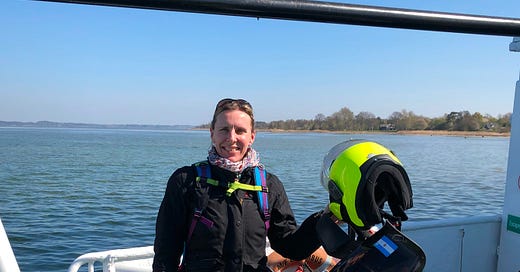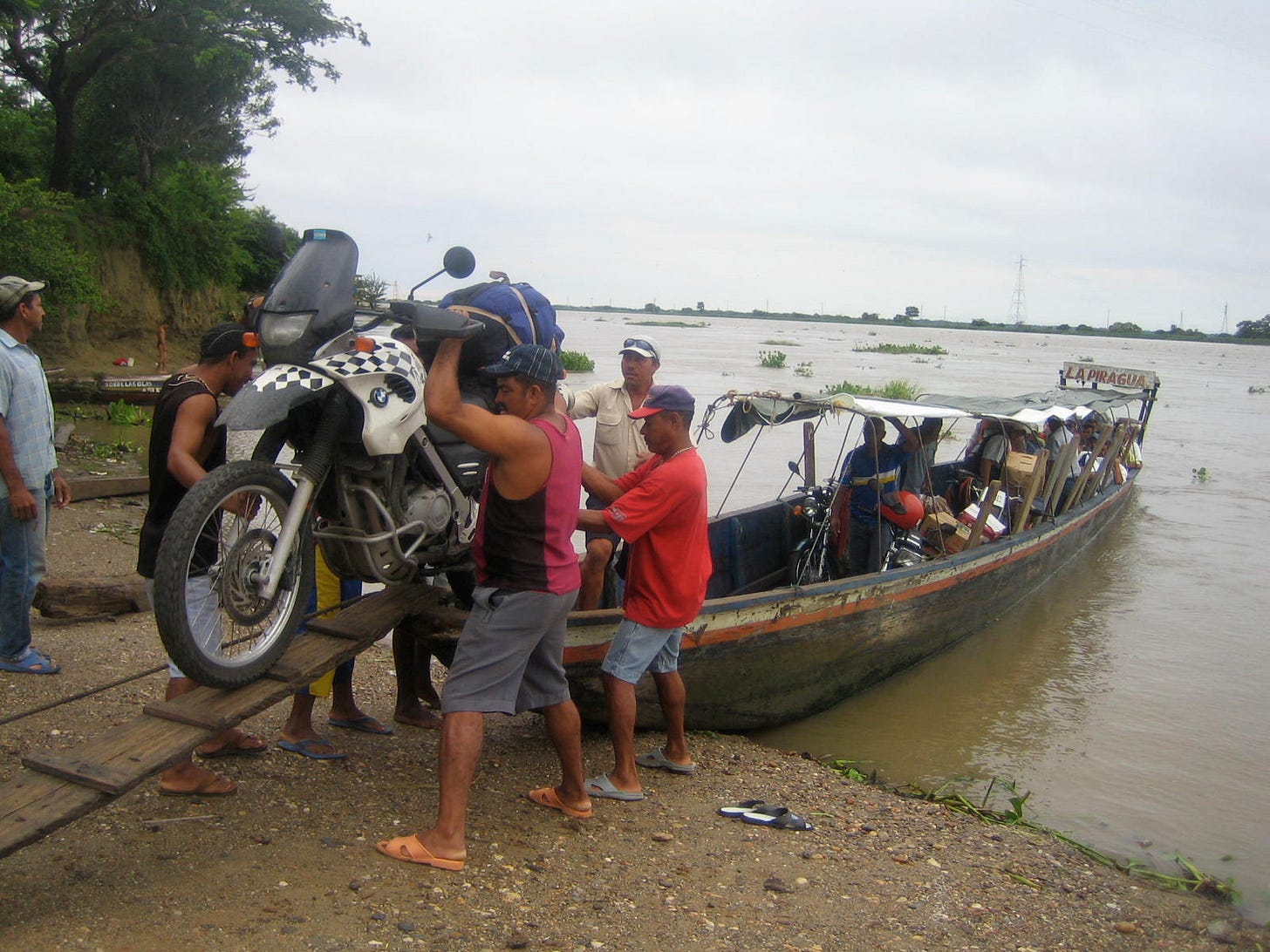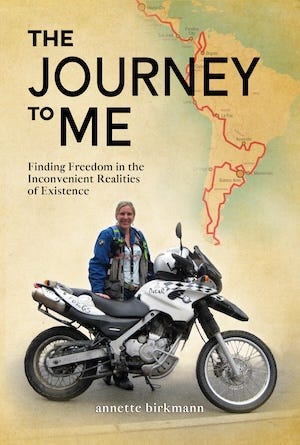In my work as an editor and ghostwriter I see a fair number of memoirs in early drafts. Because I’m a long-distance motorcyclist and edit a motorcycle magazine, a lot of these memoirs are travel stories that invariably focus on the exotic aspects of the traveler’s experiences while giving short shrift to how the adventure encouraged them to reexamine their own character and beliefs. The travelog memoir that lacks an emotional hook just becomes a quick read that’s quickly forgotten.
Early travel memoirs tend to follow this line: “First I went here and saw this, and made it through this tricky situation only to find myself faced with something even more difficult when I arrived at my next destination…” Reading a narrative like this is like watching an action movie that’s all pyrotechnics and gore.
Cast your mind back to the original Die Hard (1988) starring Bruce Willis as a New York City police officer trying to save his estranged wife and other terrorist hostages in a Los Angeles skyscraper. Willis’ character, John McClane, longs for a happy family life, but that will be impossible if he can’t save the day. The movie would have failed completely without this (and other) emotional hooks.
Adding vulnerability and self-reflection is more difficult than writing the travelog itself. I just finished one that does it effectively, The Journey to Me: Finding Freedom in the Inconvenient Realities of Existence by Annette Birkmann. I interviewed Annette last week and we had a good laugh about how difficult—and rewarding—it is to tell the story of an inner adventure alongside the outer. In The Journey to Me, descriptions of scenery and sticky situations were a window into the soul of a woman coming into her own.
In summary, The Journey to Me follows our heroine after establishing a law career, marrying, and buying a house—fitting in quite well with Danish social conventions. The tension rises when she chucks it all to get to know her true self on a solo, South American motorcycle trip of 33,000 miles.
The book opens with Annette on her thirtieth birthday in the wake of a marital spat that led to divorce. Admire her candor here:
He’d voiced his complaints and despite many of them being legitimate, I didn’t listen. For several months he’d been trying to tell me he wasn’t happy in our marriage, but I didn’t want to hear it. If I had started listening to him, I’d have been forced to listen to myself, which was even more terrifying…I was simply afraid of discovering that I wasn’t leading the life I wanted to live.
Equipped only with the name and address of a motorcycle rental company in Buenos Aires, Annette left Copenhagen. The day after she landed, she found the shop and asked in well-rehearsed Spanish, “I’d like to rent a motorcycle.” Lucky for her, the owner spoke fluent English and agreed to rent her a Honda Transalp 600 for ten days. She would eventually get a job as a motorcycle mechanic apprentice at that same shop, communicating with her mentor through the aid of a pocket dictionary (Google Translate had been invented in 2006, but wasn't an app until 2010).
Living in Buenos Aires, the tall, blonde Dane stood out everywhere. Once again, she bares her soul:
The biggest challenge in Buenos Aires, though, was dealing with the mental baggage I had dragged with me from home…I wanted to get away from the pursuit of status and material goods that characterized my life in Denmark. I no longer wanted to dress nicely to go to work, hide under expensive brands or spend time shopping to build a self-image that really had nothing to do with me.
My steadfastness lasted two weeks, after which I ventured out shopping for the first time. I bought a skirt, a blouse, a handbag, and a pair of long boots with a heel. A few weeks later, I started applying mascara and lip gloss before going to work in the workshop.
…Contrary to my intention, I had unwittingly started to replace the old layers with new ones. Now I was the tall, fair-haired lawyer from Denmark who rode a big motorcycle. Wasn’t that cool? Pretty cool, I thought at the time, but it was just a new, empty shell.
Annette bought a BMW 2000 F 650 GS Dakar, with 7,500 miles on the clock and promptly named it Señor Dakar. She still has the bike today.
Annette packed light when it came to clothing—but, like my very own soul sister, brought a heap of books too. Asked which one helped most, she surprised me by saying Henry David Thoreau’s Walden, a book I’ve always thought of as a school assignment. I need to read it as an adult.
When Annette broke free from Buenos Aires’ gravitational pull and headed south, she was determined that her “usual longing for acceptance and recognition be the last thing on my mind.” She didn’t even call home because she feared it would keep her from her mission.
Although she planned only one day in advance, Annette found herself overwhelmed by indecision. “I went from deciding everything with my head, focusing on the future, to deciding everything with my body, focusing on the present. The transition wasn’t easy.”
Neither was the transition from asphalt to gravel, which she found in abundance, along with brutal Patagonian crosswinds. In one stretch—headed to Tierra del Fuego—the winds knocked Señor Dakar’s mileage from 185 miles on a tank to 130. There, something strange happened. “I no longer felt the harsh conditions. It was as if I slipped into another dimension—wind and cold permeated my body, but I felt myself in another place where I could keep going on and on.”
This kind of permeating stillness reemerged a few days later, after Annette made a dodgy border crossing without the proper documents, and crashed on a gravel road.
I was as calm as the bottom of a deep lake. What I had feared most had just happened. Until this moment, every minute on gravel had been a minute ruled by fear. Now my biggest fear had come true: I had crashed on a deserted country road, my motorcycle was down, and I couldn’t get up. I was in a country where I wasn’t allowed to ride my bike and where you couldn’t talk yourself out of trouble with the police.
She found a bright side in this misfortune: “I was relieved to get rid of the side bag. It had hung too close to the exhaust, and the heat had begun to melt the plastic. Now, that problem had vanished away.”
Just when she thought she had sorted herself out, setbacks—physical and emotional—kept coming. In a favorite passage, she shares the rock-bottom self-talk from her journal on Day 87 in Villa de Angostura:
I’m living my dream and I just feel like throwing up because I’m so tired of my life. Maybe I’m already tired of traveling. I don’t fucking care about things I see around me. I really couldn’t care fucking less. It’s as though my motorcycle trip has become a mere pretense. A cover-up as it were, to show the outside world, while in truth, behind the scenes, I do nothing…Is it much better than being at home and going to work though? Hardly. People are constantly in quest for something new that they never seem to find. Of course, I’m no better myself…Perhaps I’ll end up crazy, which might be better since I would be unaware of the trouble of living…
Annette eventually figured out that it was only when she gave herself the attention she had sought from others that the loneliness disappeared.
It won’t surprise you to learn that Annette is now a headhunter, executive coach and speaker. Still living in Copenhagen, her next book is about seeing the potential that others overlook. I hope she translates it into English, too.
About the Book:
THE JOURNEY TO ME: Finding freedom in the inconvenient realities of existence by Annette Birkmann is available in Kindle and paperback editions. $16.95 with Amazon Prime. OpenRoad Publishing (June 21, 2024). 190 pages, ISBN: 879952882able
How to Write a Good Travel Story
As an editor and columnist for the BMW Riders Association’s magazine, I see a lot of stories by travel enthusiasts who are eager to share their passions. Few of them are professional travel writers, which gives me a window on common hiccups that can lead to dull, repetitive, and unpublishable articles.







